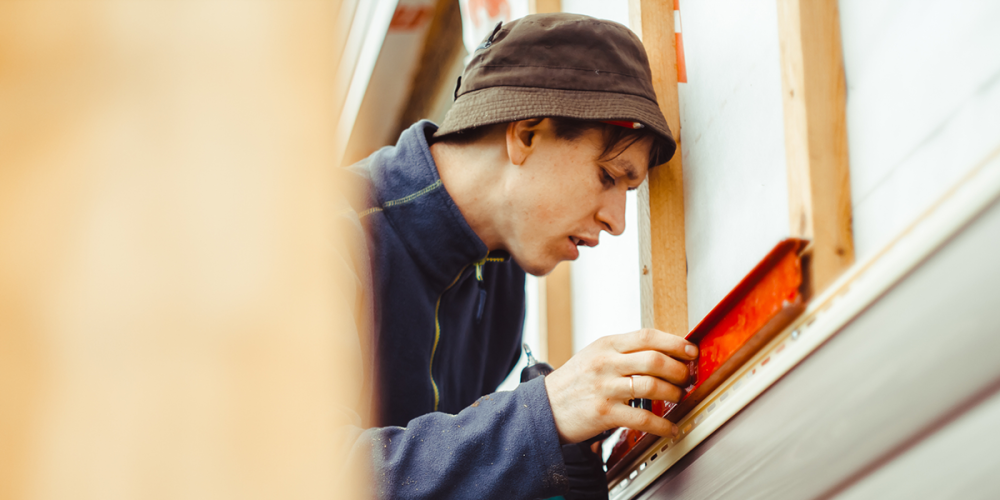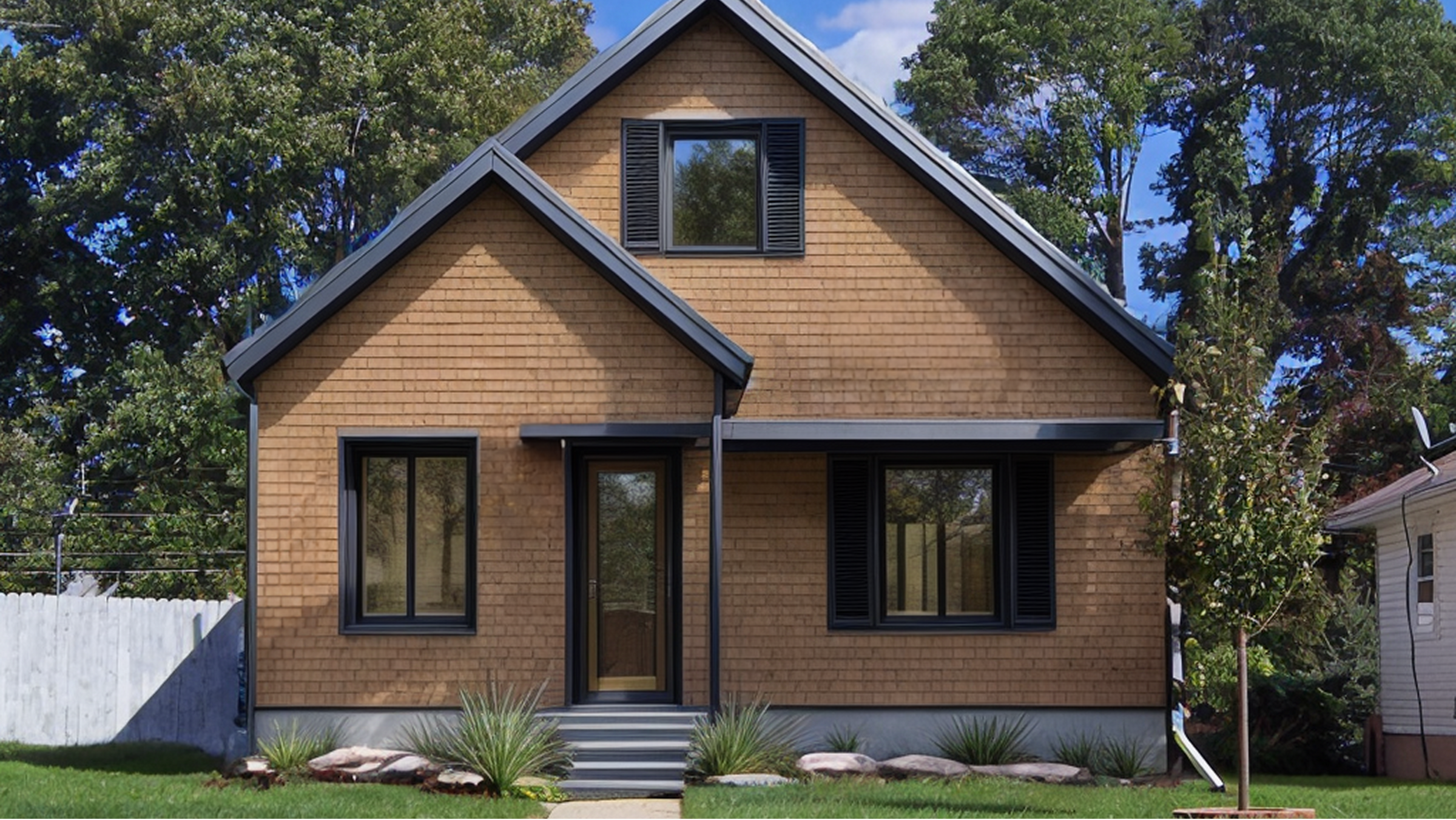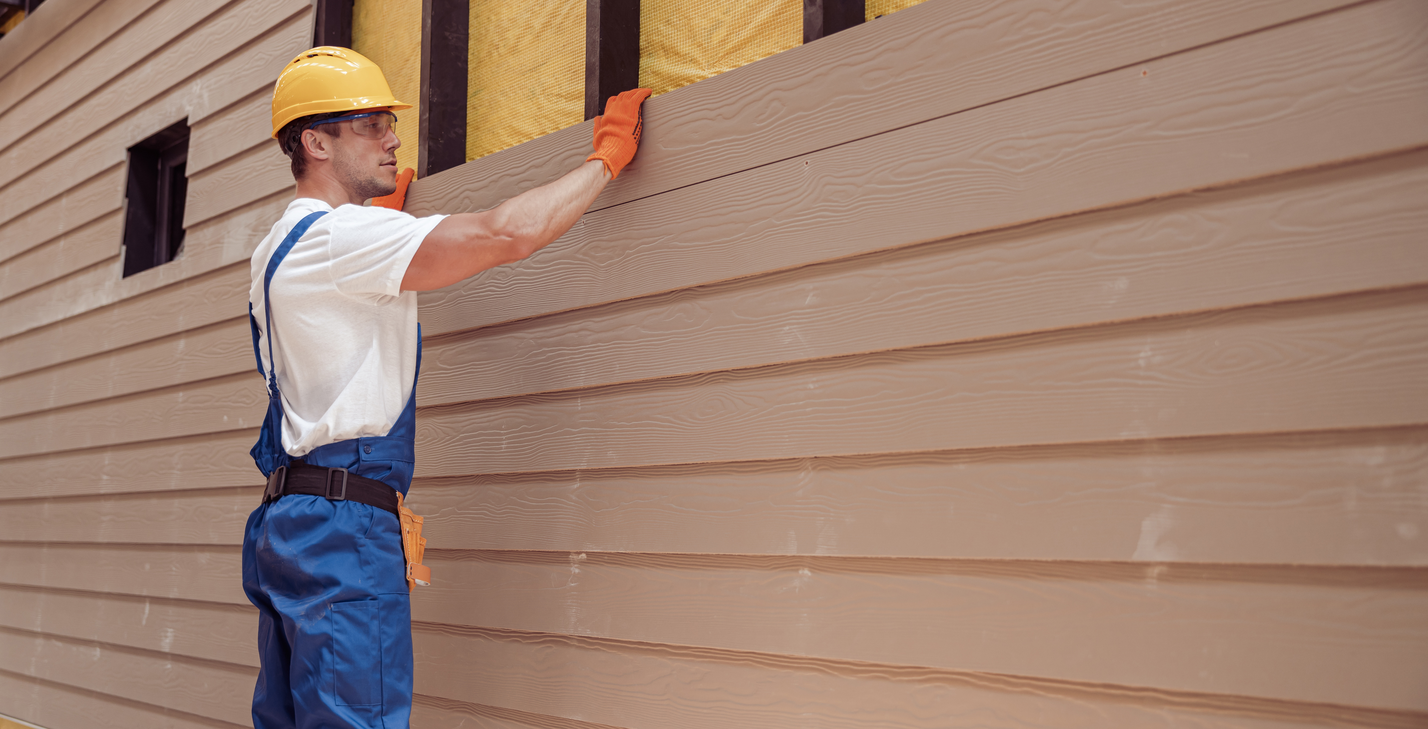Fixing up or redoing your home’s siding is quite an undertaking. Figuring out the costs, understanding the different material types, and obtaining the necessary permits are all integral parts of having the project completed successfully.
In this article, we’ll do a cost estimation breakdown of a siding project, dissect labor costs, and help you figure out the right materials and permits for the job. Plus, we’ll offer tips on how to find the right contractor.
Factors influenceing siding costs
- Material selection: Comparison of popular siding materials: vinyl, wood, fiber cement, brick, and metal.
- Home size and design: How the square footage and architectural complexity affect costs.
- Labor and installation: The impact of labor rates and installation complexity on overall expenses.
- Geographical location: Regional cost variations due to labor and material availability.
- Removal of existing siding: Costs associated with removing old siding materials.
Average costs of labor
Labor costs can vary depending on where you live, but on average the price of labor to install siding is around $1 to $12 per square foot. The prices vary so much because of the different material types and their necessary equipment or specialties.
So if you’re looking to save money, make sure you choose a siding material that isn’t difficult to install or requires specialized equipment. You can also cut costs by having your siding replaced in the spring or fall when companies are less busy—summertime is their busiest season, so prices tend to be higher.
Full siding cost estimate breakdown
The cost of siding a house is more than just the price of the materials and labor. Here we’ll breakdown the average siding project for a vinyl siding installation (we chose vinyl because it’s one of the most common siding options):
- Siding installation permit: $200
- Finishing strips: $19.80 — it’s usually six strips at $3.30 each
- Starter strips: $41.75 — it’s usually 15 strips at $2.75 each
- Outlets/vents/hydrants: $300 for plug-in outlets, light fixtures, replace gable vents, and hydrant faucets
- Inside corner: $48.60 — it’s usually nine pieces at $5.40 each
- Outside corner: $19.70 — it’s usually two pieces at $9.85 each
- J-Channels: $198 — average 55 pieces used at $3.60 each
- Nails: $40.00
- Shutters: $468 — for 12 pieces at $39 per
- Additional: $45 delivery charge and $250 garbage rental
- Old siding removal costs: $1,000
- House wrap or weather barrier Installation: $150–$300 — to provide moisture protection and insulation beneath the siding.
- Flashing: $50–$200 — to seal joints around windows, doors, and rooflines and prevent water infiltration.
- Insulation board: $500–$1,000 — optional but beneficial for improving energy efficiency under the siding.
- Paint or coating for trim: $100–$300 — for areas around windows or doors requiring touch-up or protective coating.
- Scaffolding or ladder rental: $150–$400 — if the project involves multiple stories or difficult-to-reach areas.
- Caulking and sealants: $50–$100 — to ensure watertight seals at siding joints and around fixtures.
That price tag, however, does not include the actual vinyl siding or the cost of labor. Let’s assume we’re siding a 1,000-square-foot home. That means the labor costs would be in the $4,000-$8,000 range, and the cost for materials would be another $4,000-$6,000 on average.
Thus, in this example, the grand total would be close to $20,000.
Estimated siding price by material type
As stated briefly before, vinyl siding is one of the more popular siding options because it’s durable, easy to install, and relatively inexpensive compared to other siding options. The average cost of vinyl siding is $2.50 to $10.75 per sq. ft. installed. Let’s look at the other materials’ costs in comparison (all prices are per square foot, installed).
Budget-friendly options
-
Vinyl shake or shingle siding: $6.50 to $12.75 per sq. ft. — Mimics the look of cedar shakes but offers lower maintenance.
-
Engineered wood: $3.40 to $9.25 per sq. ft. — Combines wood aesthetics with better resistance to insects and moisture but requires careful installation to prevent water damage.
-
Aluminum: $3.00 to $7.25 per sq. ft. — Durable and rust-resistant, but prone to denting, fading, and chalking over time.
Mid-range options
-
Wood: $2.25 to $15 per sq. ft. — A classic, natural look but requires frequent maintenance and is prone to warping, cracking, and insect damage.
-
Steel: $4.25 to $8.75 per sq. ft. — Extremely durable and fire-resistant, though heavy to install and susceptible to rust without proper coatings.
-
Stucco: $5.50 to $7.50 per sq. ft. — Textured, durable finish with good insulation but prone to cracking in wet climates and requires skilled installation.
-
Fiber cement: $4.50 to $11.25 per sq. ft. — Offers the look of wood or stone with superior durability but is heavy, labor-intensive to install, and requires periodic repainting.
-
Board and batten siding: $3.50 to $10.50 per sq. ft. — A classic design often made of wood or engineered wood.
-
Composite siding: $5.00 to $10.00 per sq. ft. — Made from a mix of wood fibers, plastics, and resins, offering a balance of durability and affordability.
High-end and luxury options
-
Brick veneer: $8 to $13 per sq. ft. — Lightweight and easier to install than full brick, offering similar aesthetics with minimal maintenance needs.
-
Brick: $11 to $27 per sq. ft. — Highly durable with excellent insulation but requires skilled installation and periodic maintenance of mortar joints.
-
Stone veneer: $8.50 to $17.50 per sq. ft. — A more affordable alternative to full stone siding.
-
Stone: $21.50 to $38.75 per sq. ft. — Luxurious and weather-resistant, though costly and labor-intensive to install due to its weight.
-
Glass panels (Specialty): $20.00 to $40.00 per sq. ft. — Used for modern and luxury designs, more niche but worth noting.
Specialty or rustic designs
-
Log siding: $4.00 to $14.00 per sq. ft. — Gives a rustic, cabin-like appearance but requires significant maintenance.
-
Concrete siding: $4.00 to $8.00 per sq. ft. — Durable and low-maintenance, but heavy and challenging to install.
If you love the look of wood, stone, or brick but don’t love the price tag, no worries! You can choose a brick-look, stone-look, or wood-look vinyl siding style to get the look you love at about half the price. If you’re interested in vinyl siding and want to learn more about its cost breakdown, check out our blog!
Additional cost considerations
Insulation and energy efficiency
The choice of insulation can significantly impact the overall cost of your siding project while also improving energy efficiency. Adding insulation behind your siding increases upfront costs but helps reduce heating and cooling bills in the long term. For example, insulated vinyl siding provides an additional layer of thermal protection, making it a great choice for homeowners looking to enhance energy savings. Consider insulation options like rigid foam boards or spray foam to complement your siding installation.
Permits and inspections
Obtaining the necessary permits and scheduling inspections are critical components of a siding project. Permit costs can range from $50 to $500 depending on your municipality and the scope of work. These fees ensure compliance with local building codes and help avoid costly fines or project delays. An inspection may be required once the siding is installed to confirm proper adherence to safety and structural standards.
Seasonal timing
The timing of your siding installation can affect both pricing and contractor availability. Contractors tend to be busiest during late spring and summer, which can lead to higher labor costs. On the other hand, scheduling your project during the off-season—early spring or late fall—can result in discounts as contractors are more likely to have availability. However, ensure weather conditions are suitable for installation to avoid potential complications.
Environmental considerations and sustainability
Eco-friendly siding options
For environmentally conscious homeowners, some siding materials are more sustainable than others. Fiber cement, steel, and engineered wood siding often contain recycled content and are recyclable themselves. Additionally, materials like natural wood are biodegradable and sourced from renewable resources, making them a sustainable choice.
Energy efficiency
Some siding materials inherently improve a home's energy efficiency. For example, insulated vinyl siding can reduce heat transfer, keeping homes cooler in the summer and warmer in the winter. Fiber cement siding also contributes to better insulation when combined with appropriate underlayment. Choosing energy-efficient materials can help lower utility bills and reduce the home’s carbon footprint.
Regional considerations and climate impact
Climate suitability
Different climates call for specific siding materials to ensure longevity and performance. For instance, vinyl siding performs well in moderate climates but may warp in extreme heat. Fiber cement and stucco are ideal for areas prone to humidity or heavy rain, while steel and brick siding excel in regions with extreme cold or wind exposure. Choosing the right material for your climate can help minimize repair and replacement costs over time.
Local building cost and aesthetics
Regional building codes and homeowner association (HOA) guidelines often dictate which siding materials can be used. Additionally, certain areas may favor specific architectural styles, which can influence your material choices. For instance, stucco is popular in the Southwest due to its compatibility with Spanish and Mediterranean designs, while wood siding is often seen in traditional or rustic-style homes in the Northeast.
Maintenance and longevity
Each siding material comes with its own expected lifespan and maintenance requirements. Here’s what to expect for the most common materials:
- Vinyl siding: Low maintenance and typically lasts 20–40 years, though it may require occasional cleaning to prevent mold buildup.
- Wood siding: Can last up to 30 years but requires regular sealing or painting to prevent moisture and insect damage.
- Fiber cement: Durable and low maintenance with a lifespan of up to 50 years, though it may need repainting every 10–15 years.
- Brick and stone: Extremely long-lasting (50+ years) with minimal maintenance, typically limited to occasional mortar repairs.
Investing in proper maintenance can maximize durability and protect the home’s aesthetic appeal, ensuring your siding remains a worthwhile investment.
Understanding the necessary permits & inspections
A good thing to always remember is that any time a building is being built or altered, a permit is needed. However, a permit might not be needed in every case, if you’re doing a simple repair to a length of siding, for example. No matter the scope of the project, we recommend contacting your local planning or development authority to find out what permits and fees your city or county requires.
When contacting your local planning center, be sure to inquire if an inspection will be required once the project is completed. It might not be necessary for your location, but that’s not an assumption you want to make! Skipping an essential inspection can cause an expensive headache down the road. By making a simple phone call, you can avoid a later hassle.
DIY vs. professional installation
Choosing between a DIY approach and hiring a professional contractor for your siding project is an important decision that impacts cost, quality, and time. Understanding the advantages and challenges of each option can help you make an informed choice.
DIY considerations
Taking a DIY route for siding installation can offer cost savings, particularly for smaller projects or homeowners with prior experience in construction. By cutting out labor costs, you can significantly reduce your overall expenses. Additionally, managing the project yourself gives you complete control over the timeline and materials used.
However, DIY siding projects come with notable risks:
- Skill level and experience: Installing siding requires precise measurements, proper sealing techniques, and specialized tools. Without the necessary expertise, mistakes can lead to gaps, leaks, or poorly secured panels.
- Safety concerns: Siding projects often involve climbing ladders or scaffolding while handling heavy or sharp materials, increasing the risk of accidents.
- Time commitment: What might take a professional team a few days could take a DIYer weeks, especially if unforeseen challenges arise.
- Warranties: Many siding manufacturers void their warranties if the product is not installed by a licensed contractor, leaving you vulnerable to additional costs if issues arise later.
Professional installation
Hiring a professional siding contractor ensures that your project is completed efficiently and to a high standard of quality. While it may involve a higher upfront cost, the benefits often outweigh the expenses:
- Expertise and precision: Professional contractors are trained to handle all types of siding materials and are well-versed in proper installation techniques. This minimizes the likelihood of errors, ensuring your siding is durable and well-sealed.
- Safety: Experienced contractors come equipped with the right tools and safety gear to complete the job without unnecessary risks.
- Time efficiency: Professionals can complete siding projects in a fraction of the time it might take a homeowner, reducing disruption to your daily life.
- Warranties and guarantees: Most professional installations come with workmanship warranties, providing peace of mind that any post-installation issues will be addressed.
- Compliance: Professionals ensure that your siding installation complies with local building codes and passes any required inspections, saving you potential fines or rework.
While DIY installation may be a viable choice for skilled homeowners tackling a small project, professional installation is often the safer, faster, and more reliable option for large-scale or complex siding jobs.
Tips for hiring a siding contractor
Now that you have a general understanding of the siding process and the cost breakdown, it’s time to hire a siding contractor that can get the job done. Here’s how you can find the right contractor for you.
1. Ask around
Has your neighbor or good friend recently had their siding repaired or replaced? Ask them who did it and how the project went. And if you like what you hear, ask them to put you in touch with their contractor.
If you don’t know anyone who’s undergone a siding project, you can search the internet to find professional contractors in your area. Be sure to check their websites and reviews to see if they’re reliable.
2. Get multiple bids
Reputable contractors will offer a free estimate of your project. They’ll come to your home and calculate the materials, tools, and man-hours necessary to complete your siding installation. Getting multiple estimates, or bids, gives you the opportunity to see the general cost and weed out those who are under or overestimating.
When contractors use Hover, they’re able to get accurate siding measurements with just a few photos of your home. Those smartphone photos create a fully scaled 3D model with all the necessary exterior measurements. This allows contractors to show you different materials and colors on a customizable 3D model and provide more accurate pricing estimations.
3. Ask questions
While the contractor is there presenting their estimate, ask them lots of questions. They should be able to answer them patiently, making sure you’re comfortable with the process. If you have questions about which siding is right for your home, the contractor can use Hover’s technology to show you what your home would look like with different siding options—so you feel confident with your decision.
Siding your house is a big decision and you want to feel at ease knowing you made the right choices. Contractors that use Hover have the technology to help you visualize the final project and have more accurate estimates for a seamless experience.

-1.jpg)

